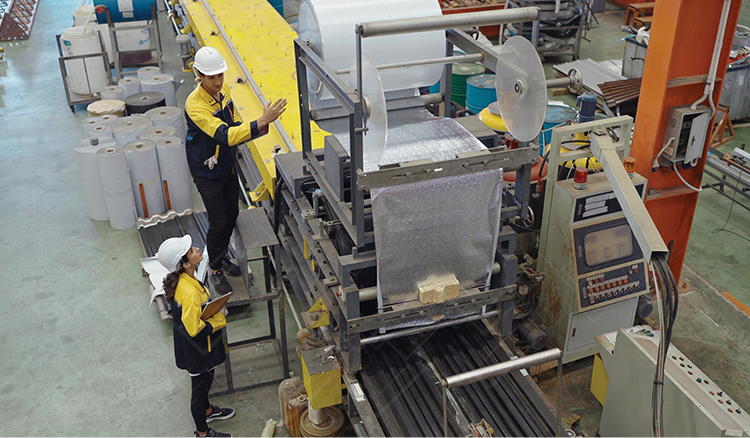POV: Lean Leader - Any Part, Any Quantity, Anytime.
It goes by several names – Lean, Continuous Improvement, Operational Excellence, Process Improvement, Transformation – but the core of this discipline, regardless of nomenclature, is to reduce the amount of time between cash going out the door until you collect cash for a delivered product. We do this through the elimination or reduction of waste and the optimization of processes, always with the customer in mind. I’ve spent more than a decade on the floor executing kaizen and rapid improvement events to organization-level strategy alignment and deployment (Hoshin Kanri). System-level cohesion with organizational alignment and determined execution; everyone rowing the boat to the drum beat of the customer to maximize efficiency.
Capacity planning is already a difficult task, made all the more difficult by organizational misalignment. The commercial team, always the optimists, will always forecast at or above plan. They are, after all, generally compensated based on demand generation. The supply chain team looks to reduce aged material in raw, WIP and finished goods form. After years of witnessing reality, they take some liberties decreasing the buy quantities, but they are only making an educated guess at which demand is real and which is wishful thinking and will inevitably be burned. Which leaves the operations team, tasked with actually creating the value and sellable product. Bogus demand signals, wasted capacity on building finished goods that will age 90+ days, raw material shortage from missed buy signals, and the resulting forced expedites, all before they deal with the issues within their four walls.
We’ve all been there, you’ve just walked out of your demand-capacity check or S&OP meeting, and you’ve hit your theoretical plant capacity based on high-level, gross volume. There are a million-and-one things that can happen in any given day (let alone a month), that will determine your ultimate success or failure to deliver on the plan. Order volatility, supply chain disruptions, unique processing time for each product family and SKU, monument/shared resource capacity, turnover, absenteeism, to unplanned downtime, scrap, the list goes on. Regardless, you’re now on the hook to get it done. Then it happens, your customer lands a big order, which means the note is getting called on your promised lead time. You either get it out the door on-time or risk losing market share on this order and future orders. Because the commercial team is never turning down an order, you run an unconstrained plan through your ERP. You now have a full extra day of production volume on top of your at capacity plant schedule due in three days.
Traditionally, there are only so many levers you can reach for when formulating a recovery plan:
- Overtime – almost always the first trigger pulled. It’s the only one you have control of in the minutes and hours.
- Temps – They’re a warm body, but less than 50% productive, slowing everything down.
- Overproduction – extending lot size to try and increase machine utilization, almost never the right product.
- Abandon FIFO – you have to pull some forecasted orders in to extend those runs in the name of utilization, some firm orders are going to get pushed/missed.
As a lean leader, you strive to create some process stability, a standard that can be improved upon, entrenched, sustained, and improved on again. In an effort to combat less than ideal SKU-level forecasting, we implemented a postponement strategy that would allow us to prevent aging finished goods and the sunk opportunity cost of producing the wrong product. However, finishing processes varied greatly. To address this, we implemented a flavor of the 1-up / 1-down method for standard work, building a playbook to spread total work content across X resources to maintain our pace to TAKT. However, with a greater than 30% disparity in processing times, it proved too difficult to balance the work with the resources we had. Often leading to pulling product off the line to be processed separately, worsening the WIP situation. Now that we were locked into what the final SKU will be, without more rework, it would wait until resources are freed to complete them. The strategy was sound, but our ability to execute based on resource constraints prevented us from realizing the full value potential. In Operations, Labor is always considered unconstrained assuming that resources can be added and subtracted at will. Yet, traditional labor models do not support the kind of agility needed to execute these lean methods in real time.
If the scenario above hits close to home, giving you flashbacks of sleepless nights, it doesn’t have to stay this way. This type of agility is within reach, for less organizational investment than you think. Looking back on it, with the thinking work already done balancing total work content across the critical/dependent path, we only needed the resources to execute. Veryable would have been a great resource in driving the full value potential of our strategy. Having Operators in Your Labor Pool (YLP) that have already been vetted and trained by our frontline leaders. We could have literally flipped a switch, called the play from the playbook, and focused on execution.
To demonstrate this concept, we wanted to walk you through how a Labor Playbook could work in your Operations. This would give you the ultimate amount of scalability allowing you to respond in real time to demand changes while optimizing your Labor cost. When demand increases and Takt Time shrinks below what your Labor Playbook can handle, Veryable Operators can support production to satisfy your customers. Learning how to weaponize this tool can enable rapid growth, optimized costs, and lower lead times - making your business significantly more competitive and more profitable.
(Slide 1/7): Single Full Time Employee executing process steps at all 6 workstations

(Slide 2/7): Fully Staffed. One Full Time Employee per workstation.

(Slide 3/7): Full Time Employee is cross-trained in 1 workstation Up and 1 workstation Down.

(Slide 4/7): Understanding Takt Time you can leverage cross-trained Full Time Employees to optimize labor resources to customer demand.

(Slide 5/7): Positive impact on WIP and unproductive labor when balancing work to customer demand rather than annual average capacity planning.

(Slide 6/7): Veryable Operators can be placed alongside FTEs as helpers to absorb Non Value Add work allowing you to maintain high OTD service levels and use management bandwidth to continually improve through kaizen

(Slide 7/7): Fractionalizing work allows quicker training. With Standard Work, Full Time Employees and Veryable Operators can give your operations instant scalability and drive significant labor productivity.

Adding integrated tools like Workforce management (WFM) and the Standard Work module on the platform would allow you to create a hyper-flexible playbook to optimize your operation no matter what comes your way. I suggest you start small, focus on your bottleneck process, remove the constraint, and move on to the next. Invest in building a labor pool that can be deployed in real time, creating bandwidth to upskill your existing workforce. Creating this operational dexterity provides bandwidth for leaders to focus on strategy and growth.
Change is hard, often only the product of pain or necessity. Lean leaders understand this better than most, being organizational influencers, convincing their peers change is needed without the battle scars of past mistakes fresh in their minds. Having a tool at your disposal that allows you to focus on the strategic and gives front line leaders the ability to execute tactically, creates the kind of customer-centric delighters that will gain both market share and customer share of wallet, fueling future growth with expanding margins.
To get started, check out the Veryable website and reach out to your local team for support. The full weight of Veryable’s operational strategists and innovative technologist are here to guide you through this journey as we revolutionize the future of manufacturing and logistics, together.
To learn more, visit our homepage for Continuous Improvement / Operational Excellence / Lean.
Previous Posts
The Trade Deficit Is Shrinking. That’s Not a Recession Signal. It’s a Reindustrialization Signal.
The Future of Manufacturing and Logistics
Create a free business profile today to explore our platform.






